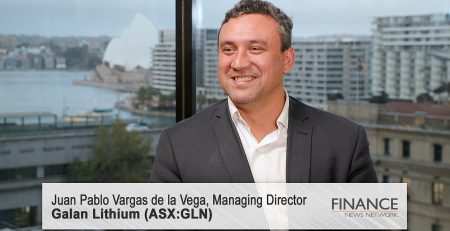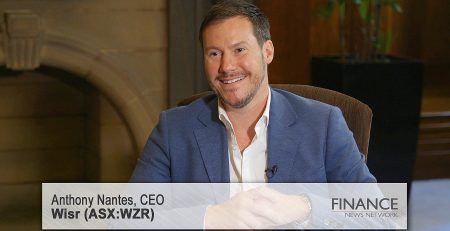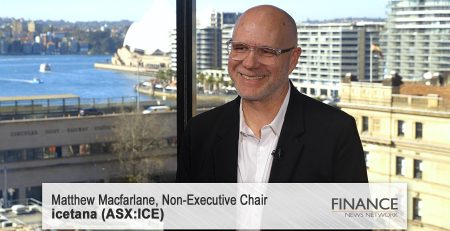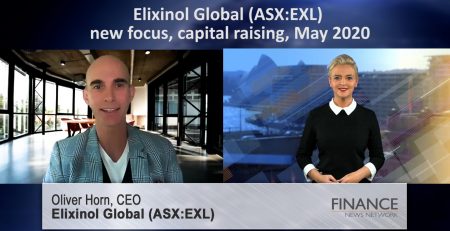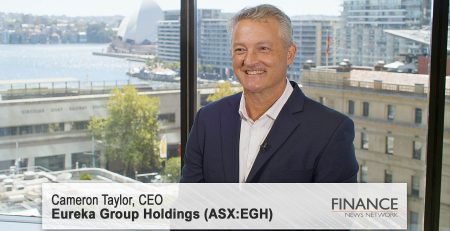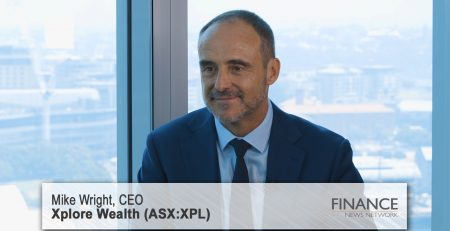Market update with Shaw and Partners, June 2023
Thanks, Tim, and welcome, everyone, to the Hidden Gems webinar today, on 9 June. Today's theme, as you can see from the companies, is probably gold and energy transition, and they're two very interesting topics for markets at the moment. But let me start with, I suppose, a helicopter view of equity markets and how we at Shaw and Partners are advising our clients on how to navigate markets.
So, there's three main areas that we look at when framing the outlook for investment markets, and they are financial conditions, global growth and central bank decision-making, or central bank positioning. So, if I think about the first one, it's probably been the most topical this year, is just financial conditions, which is a carry-all for how hard is it to get money from a bank and how much does it cost you?
So, if we go back, you know, 24 months, money was free and abundant and you could pretty much refinance anything for around about 2 per cent a year. So whether that was a house or a share portfolio, you could refinance pretty much anything you like because governments were making money pretty much free for the banking system in Australia. We had the term funding facility, which was a hundred billion dollars which was given to the banks to lend at 0.1 per cent interest. So, it's kind of free money. So, it was like, "Go out and lend this free money." So of course we took advantage of that and we borrowed money against absolutely everything, and we locked in, you know, low rates at less than 2 per cent.
So, fast-forward to today, and obviously we can see the RBA cash rate's now up to 4.1, with most commentators saying it's probably going to go higher than here, and mortgage rates are around about 6 per cent. And it's a lot harder to get money because the income tests that people are doing now, they need to be at maybe a 9 per cent interest rate that they're assessing you on. So, not only is money much more expensive, it's much more difficult to get. And it's not just in Australia that's the case. That's a global phenomenon. So, we've got US 30-year fixed rate mortgage yields around about 7 per cent, and, you know, the same loan two years ago was more like 3 per cent. So, interest rates have gone up dramatically, and funding and availability.
So, when financial conditions are tightening, it's generally not good for growth assets. That's not the case for all stocks. The companies that are on today's call, probably less of an issue really what's going on in financial conditions. It's really about the underlying commodities that they're involved in. But, generally speaking, financial conditions are not particularly supportive for Aussie companies at the moment.
If I move to global growth, the big great white hope for global growth this year was the reemergence of China into the global economy. As we know, they had probably the most stringent COVID lockdown measures for most of last year. And heading into this year, most people figured that they would keep them in place until the middle of year, until they're through their winter, through their golden week, etc. But obviously they made the decision at the end of last year to relax those, so we have seen China come back with a vengeance. Their economy's growing, their citizens are travelling again, but it's a little bit stop-start.
It's not a traditional Chinese recovery. It's not led by property investment and fixed asset investment by the government. It's more aimed at the consumer. So, it's a little bit of a different recovery and it is sputtering in nature. So, China's economy is as much dependent on its exports as its home market, and obviously with the rest of the world being in some sort of recession, its export industries aren't performing as strongly as we would like. So, China's sort of sputtering along.
For the rest of the world, the potential slowdown in growth continues. So, we saw the World Bank and the IMF both reduce their global growth forecast going out, because the interest rates are biting in Europe, in the US, in Australia, in many, many other countries. The Bank of Canada and the RBA are putting up rates this week, for example. So, the outlook for growth is probably, it still gets harder from here. We've got the cliff of consumption where people have chewed through the savings they built up during COVID, and now households are being squeezed by not just higher interest rates, but higher inflation.
So, most consumer price indices around the world, probably the US is the lowest at around four or five per cent. But for most developed markets, inflation's approaching seven, eight, and in some cases over 10 per cent. So higher inflation, higher interest rates are squeezing household consumption. That's going to be difficult for governments to do much about because governments are all trying to get back to surplus as well. So, the outlook for growth's not great. Financial conditions are tightening. And, finally, is just central bank positioning.
So, we feel we are getting close to the end of the interest rate hiking cycle. We think that the Federal Reserve's probably the most advanced after New Zealand, because New Zealand have pretty much said that they're finished on rates. The US, which has a Fed meeting next week, is probably the closest to calling a halt to interest rate rises, just because inflation's going to fall to around 4 per cent, employment's just starting to come off the top, and they've got 5.5 per cent interest rates already. So, we think the US may be the first central bank to probably cause a pause, but we think other banks, such as the Reserve Bank, have probably got more work to do. We've got 7 per cent unemployment, we had an 8 per cent minimum national wage increase, and rates are only at four. So, we think, unfortunately, for Aussies, that the RBA might have to go tighter.
So, putting those three factors together, we're still relatively conservative of a position. It doesn't mean you can't add, you know, some stocks to your portfolio. We're long-term investors. You always put some money into the market. But we're just probably a little bit more on the cautious side at the moment. So, just more of a conservative portfolio.
So, what does that mean for investors? If you're a 60/40 balanced portfolio, or a 70/30 balanced portfolio, meaning 70 per cent in growth assets and 30 per cent in income, we'd be a little bit lower in growth and a little bit higher in income. Just as we see the economy slowing, financial conditions tightening and central banks still tightening rates. So, we probably see that changing towards the second half of the year/early next year. We just think now is the time to be a little bit cautious, build up some cash in your portfolio, and keep a lookout for the opportunities, three of which you're going to hear about today. So, with that, I'll hand back to you, Tim.
Ends
Copyright 2023 – Finance News Network
Source: Finance News Network


